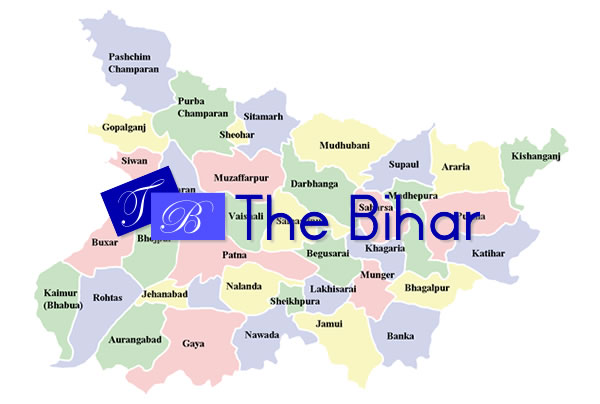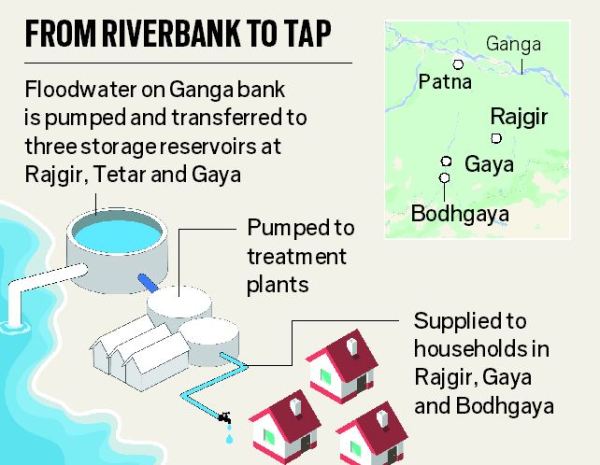Siwan
7 min readSiwan Also known as(Bombay of Bihar)is one of the districts of Bihar state, India, and Siwan town is the administrative headquarters of this district. Siwan district is a part of Saran Division. The town is known for its great past especially that the ‘First President’ belonged to Jeeradei. Siwan is situated in the western part of North Bihar. It is bordered by Gopalganj District in the north and by the river Ghaghara in the south beyond which lies the Ballia district of Uttar Pradesh. In the east of Siwan lies Saran District while Deoria District bounds it from the west. The global location of Siwan District is between 25° 53′ to 26° 23′ North latitudes and 84° 1′ to 84° 47′ East longitudes. Siwan covers an area of 2219 km². Siwan, the district headquarters, is located on the eastern bank of river Daha. According to the 2001 census the population of Siwan District is 27, 14,349. The Literacy Rate in the district is 51.65%, as registered in the census of 2001.
The district forms a part of the alluvium of the broader Indo-Gangetic Plain. The district is navigated by few small rivers like Jharahi, Daha, Gandaki, Dhamati or Dhamahi, Siahi, Nikari and Sona. Along with the smaller ones Ghaghara is the perennial river which flows alongside the district’s boundary. This region is marked by some typical geographical formations like ‘Chaurs’ and ‘Draras’.
At present there are sixteen functional blocks in the district namely – Siwan, Mairwa, Darauli, Guthani, Hussainganj, Andar, Raghunathpur, Siswan, Barharia, Pachrukhi under Siwan subdivision and Maharajganj, Duraondha, Goreakothi, Basantpur, Bhagwanpur and Lakri Nabiganj under Maharajganj subdivision.
Amir Subhani is UPSC civil services exam topper & record breaker (for highest marks acheievr, ever acheievd by any topper of UPSC Civil Service Exam) so far un till 2008. Presently, he is secretary to the Govt. of Bihar.
Siwan has the maximum of NRI of Bihar state of India mostly in Gulf countries.
The place of the stalwart and robust ‘Bhoj-puries’, Siwan District is important as a tourist spot. Some believe Siwan to be the place where Lord Buddha died. Also known as Aliganj Sawan after the name of Ali Bux; Siwan has historical and mythological importance attached to it. Language spoken here are Hindi, Urdu & Bhojpuri.
Area: 2,219 km²
Population: 2170971
Sub Divisions: Siwan, Maharajganj
Blocks: Mairwa, Pachrukhi, Raghunathpur, Aandar, Guthani, Maharajganj, Darauli, Siswan, Daraunda, Husainaganj, Bhagwanpur, Hat, Goriyakothi, Baraharia, Habibpur,Siwan Sadar, Basantpur, Lakari, Nabiganj, Jiradei, Nautan, Hasanpur
Agriculture: Paddy, Wheat, Sugar Cane, Maize
Industry: Sugar factories, Thread factory
Rivers: Daha, Jharhi, Gandak and Ghaghara
Educational Institutions
Siwan College of Engineering & Technology, Unani Medical College, D.A.V. P.G. College(Siwan), D.A.V Ayurvedic Medical College & Hospital, Z.A. Islamia College (Siwan), Islamia High & Middle School, Mahabiri Saraswati Vidya Mandir (CBSE), Iqra Public School(CBSE), VM Inter College, VM High & Middle School, DAV High & Middle School, Siwan DAV Intermediate College, Vidya Bhawan Mahila College, D.A.V PUBLIC SCHOOL(CBSE), Vatayan Mahabiri Saraswati Shishu Mandir(CBSE), Kendriya Vidyalay(CBSE), Navodaya Vidyalaya(CBSE).
Theaters
Darbar, Shekhar, SANTOSH, Krishna in town.
Locality
Hospital Road, Qagzi Muhalla, Naya Qila, Purana Qila, Makhdum Sarai, Shukla Toli, Nirala Nagar (Professor Colony), Aasi Nagar, Shastri Nagar, Mahadeva, Anand Nagar, Dakhin tola, Rajendra Nagar, Nawal Pur. Ansari Mohalla Nawalpur siwan, Isalamia Nager, moulana majaharul haque colony, Durbar mohalla, doctor colony etc.
Famous Shrines
Baba Ajagaib peer, Hussain ka karbala, kali Mandir
Profile
Siwan, situated in the western part of the State, was originally a sub-division of Saran District, which in ancient days formed a part of Kosala Kingdom. The present district limits came into existence only in 1972, which is geographically situated at 25°35 North and 84°1 to 84°47 east. The total area of the Siwan district is about 2219.00 km². with a population of 21,56,428 as per the 1991 census. The district is bound on the east by the Saran district, on the north by Gopalganj district and on the west and south by two districts of U.P. viz. Deoria and Balia respectively.
Siwan derived its name from “Shiva Man”, a Bandh Raja whose heirs ruled this area till Babar’s arrival. Maharajganj, which is another subdivision of Siwan district, may have found its name from the seat of the Maharaja there. A recently excavated marvelous statue of Lord Vishnu at Village Bherbania from underneath a tree indicates that there were large numbers of followers of Lord Vishnu in the area. As the legend goes, Dronacharya of Mahabharat belonged to village ‘DON’ in Darauli Block. Some believe Siwan to be the place where Lord Buddha died. Siwan is also known as Aliganj Sawan after the name of Ali Bux, one of the ancestors of the feudal lords of the area. Siwan was a part of Banaras Kingdom during 8th century. Muslims came here in the 13th century. Sikandar Lodi brought this area in his kingdom in 15th century. Babar crossed Ghaghra river near Siswan in his return journey. In the end of the 17th century, the Dutch came first followed by the English. After the battle of Buxar in 1765 it became a part of Bengal. Siwan played an important role in 1857 independence movement. It is famous for the stalwart and sturdy ‘Bhoj-puries’, who have always been noted for their martial spirit and physical endurance and from whom the army and police personnel were largely drawn. A good number of them rebelled and rendered their services to Babu Kunwar Singh. The anti pardah movement in Bihar was started by Sri Braj Kishore Prasad who also belonged to Siwan in response to the Non Co-Operative movement in 1920. A big meeting was organised at Darauli in Siwan District on the eve of the Kartik Purnima Mela under the leadership of Dr. Rajendra Prasad who had thrown away his lucrative practice as an advocate in the Patna High Court at the call of Gandhiji. In the wake of this movement Maulana Mazharul Haque, who came to stay with his maternal uncle Dr. Saiyyad Mahmood in Siwan, had constructed an ashram on the Patna-Danapur road which subsequently became Sadaquat Ashram.
The next phase of the Non co-operation movement known as the Civil Disobedience movement of 1930, was fully supported in Siwan. In connection with the Satyagrah Movement Pt. Jawaharlal Nehru made a whirlwind tour of the different parts of Bihar. One of the famous meetings he addressed was at Maharajganj. A few persons of present Siwan District who played an important role in the attainment of independence were Dr. Rajendra Prasad, Maulana Mazharul Haque, Shri Mahendra Prasad the elder brother of Dr. Rajendra Prasad, Dr. Sayyad Mohammad, Shri Braj Kishore Prasad and Shri Phulena Prasad.Shaheed Sarai formarly called Jublie Sarai in British Raj holds an important place in history of Siwan.The sarai was a hub for the pro independence ignited minds and it is the place where three soldiers of independence died in british firing.Hence it was named Shaheed Sarai.It was caretaken by renowned Bhumitra Prasad Sharma ‘Vaidya Jee’, a close associate of Dr Rajendra Prasad, first president of India,who also served imprisionment in British Rule and was an active freedom fighter,aboriginally from Kanpur UP. Uma Kant Singh (Raman jee) of Narendrapur achieved martyrdom during the Quit India Movement. Jwala Prasad and Narmedshwar Prasad of Siwan helped Jai Prakash Narayan after his escape from Hazaribagh Central Jail. One of the most renowed literaturer of this country Pandit Rahul Sankritayayana started peasant Movement here between 1937 to 1938. During his visit to Champaran Mahatma Gandhi and Madan Mohan Malviya visited Siwan and Gandhiji even spent a night at Zeradei in the house of Dr. Rajendra Prasad. The chowki on which he slept then is still kept intact there.
Siwan is now also known for one of the most famoue present literary figures: the famous Urdu novelist Paigham Afaqui of Village Chanp, P.S. Pachrukhi whose novel MAKAAN is a land mark in Urdu literature. Other books MAFIA, a collection of short stories and DARINDA [collection of Poems]are important contributions to Urdu Literature.
The major changes in the jurisdiction of the district were creation of Siwan as district and the changes resulting there from, and the implementation of Trivedi Award on the 10th June, 1970 resulting in substantial alteration of jurisdiction. Siwan was being declared as a district in 1972 in which it was proposed to include 10 blocks of Gopalganj and 13 blocks of Siwan subdivisions. Two blocks Bhagwanpur and Basantpur of Siwan were declared to be added to the jurisdiction of proposed Marhaura subdivision. But after one year later in 1973 Gopalganj was made a separate district with it’s 10 blocks included in Siwan earlier and thus Siwan constituted its original 15 blocks including Bhagwanpur and Basantpur blocks. Trivedi Award was implemented on 10 June 1970. Thereby fourteen villages of Siwan having an area of 13,092 acres (52.98 km2) were transferred to U.P. and twelve villages of U.P. with an area of 6,679 acres (27.03 km2) were transferred to Siwan. The basis of this transfer was the position of Ghaghara river in 1885. After 1885 the course of the river changed from time to time resulting in intermixing the areas of U.P. with those of Siwan. Hence the position of 1885 was taken to be the base and those transfer were made accordingly. Before the Trivedi Award the boundary of Siwan with U.P. was flexible changing with the course of the river. After the Award this boundary was fixed by installing pillars on the conspicuous points, the maintenance of which is done by Govt. of Utter Pradesh and the administration of Siwan as per the provisions of the Awards. Thus after this Awards, the so far flexible boundary of Siwan vis-a-vis U.P. on both banks of Ghaghara river was given a stability. Presently four more blocks have been created namely Lakri Nabiganj, Nautan, Jiradei and Hasanpura block. Out of these newly created blocks Lakri Nabiganj is functional and rests of the three are not functional. Thus there are sixteen functional blocks in the district Namely – Siwan, Mairwa, Darauli, Guthani, Hussainganj, Andar, Raghunathpur, Siswan, Barharia, Pachrukhi under Siwan subdivision and Maharajganj, Duraondha, Goreakothi, Basantpur, Bhagwanpur and Lakri Nabiganj under Maharajganj subdivision.


